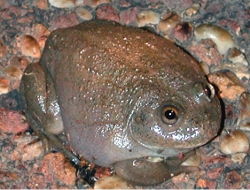|
|
RiverineThere are a number of frameworks for assessing the impacts of pressures on riverine wetlands in Queensland. One of the assessment frameworks is The Stream and Estuary Assessment Program (SEAP) which has produced a list of statewide generic stressor threats to riverine ecosystems. Common stressor threats represent biological, physical, and chemical changes that result from one or more pressures and elicit ecosystem responses. This generic list can be further split into sub-threats e.g. sediments can be split into suspended and deposited. Quick facts
SEAP uses a risk assessment process to prioitise those threats that are important to a reporting area. Priority threats are then used to determine further research and monitoring investigations. The entire generic list of threats may not be relevant to riverine ecosystems at smaller scales, but the list provides a starting point for all riverine investigations and includes:
Additional information
Last updated: 22 March 2013 This page should be cited as: Department of Environment, Science and Innovation, Queensland (2013) Riverine, WetlandInfo website, accessed 8 May 2025. Available at: https://wetlandinfo.des.qld.gov.au/wetlands/management/pressures/riverine.html |

 — Department of the Environment, Tourism, Science and Innovation
— Department of the Environment, Tourism, Science and Innovation


